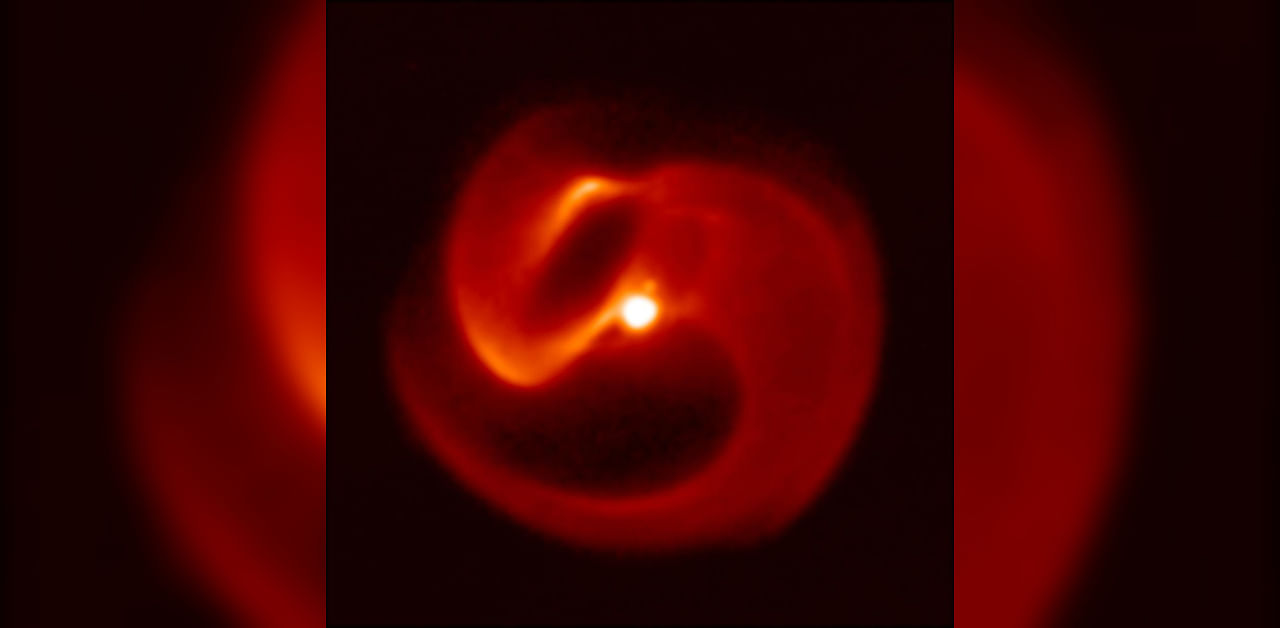
Wolf-Rayet (WR) stars are an exotic class of rare, intensely luminous stars discovered by French astronomers Charles Wolf and Georges Rayet at the Paris Observatory in 1867. They were puzzled by their unusual and peculiar spectrum consisting of colourful lines in stark contrast to the dark absorption lines of other stars.
There are only around 200 stars of this type of extreme luminosities in our galaxy which boasts of 2 billion stars. They are the most massive, most luminous (20 times or more than that of the sun) and the hottest (25,000 K or more). This can be explained by the fact that the more massive the star, the shorter the life span.
These stars were considered enigmatic till about 1950s. The striking absence of hydrogen (all other stars are made of hydrogen) reveals that they are in the final stages of evolution although they are the youngest. They emit matter amounting to almost million times more than that ejected by the sun in a year.
Emission spectrum
They can be spotted easily not only by the brightness but the striking emission spectrum as well. Larger telescopes built in the last two decades contributed to the discovery of about 100 distant members. The bright star called Gamma 2 Velorum in the constellation of Vela is visible to the naked eye though at a distance of 840 light years. Like most of the members of this group it is a binary with an equally massive hot luminous companion. It is a member of a multiple star system. Late Prof Vainu Bappu was extremely fascinated with the star and keenly observed and studied it.
Due to the extreme velocities of these stars, ranging from 2,500 to 3,000 km/s, almost one third of their mass get ejected. The gas and dust envelope the stars and the ejection looks like a pinwheel. This is detectable in ultraviolet wavelengths. One such star numbered WR 104 provided an opportunity for a novel method of observation. Every year on December 21 the sun covers and uncovers it. We can observe this 'eclipse' using radio telescopes.
Based on the infrared observations, of similar 'eclipse' caused by the moon, from the Gurushikhar Observatory at Mount Abu, the team from the Physical Research Laboratory, Ahmedabad, headed by Prof T Chandrashekhar, brought to the fore its pinwheel structure.
Most of the WR stars are found in young blue clusters. Quite naturally, their companions in the binary systems also are young. Their detection itself is the evidence of the star formation activity. There is a class of galaxies with a larger fraction of these stars hinting at the unusually high rate of star formation. They are grouped as Wolf-Rayet galaxies.
Two years ago, a team from Sydney University headed by Prof Tuthill found a binary about 8,000 light years away, where both the components are in the Wolf-Rayet phase. The resulting chaotic winds could not be missed and they named it Apep, after the Greek God of chaos. This is in a southern constellation called Norma. Both the component stars are 10 - 15 times more massive than the sun and orbit around their centre of mass with a period of 125 years. The distance between them is about the size of the solar system.
Their simple model of the expansion associated with fast rotation explained the cyclone-like pattern. What amazed them was not the fast wind but the expansion of the dust flow which was four times faster, resulting in a spiral distribution of dust. They termed it the “peacock” dance and are performing simulations further developments of the dance.
It is well-known that they represent the final phase of the evolution of massive stars. That sets a series of questions. Will the next stage be supernova? If so, what type? Will there be a neutron star or a black hole remnant? What will be the effect on earth 8,000 light years away? Will our atmosphere be blown away by the shock waves? Or will it be a gamma-ray burst?
(The writer is with Jawaharlal Nehru Planetarium, Bengaluru)